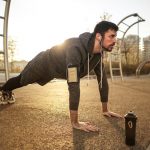Breathing exercise to improve musculoskeletal health
“The time to relax is when you really don’t have time for it.”
Have you ever been told to “just relax?” Of course, feeling relaxed would be ideal, but anyone who has panicked or felt extremely anxious knows “just” relaxing is much easier said than done.
Relaxation techniques addresses anxiety from the standpoint of the body by reducing muscle tension, slowing down breathing, and calming the mind. Structured relaxation skills like slow diaphragmatic breathing, meditation, and yoga are known to be very effective. Other techniques, such as self-care and enjoying pleasurable activities, also helps to make us feel more relaxed. In this module we’ll explore some of these strategies, explaining how they are used and why they work.
“Somatic” Anxiety Symptoms:
Most of people who experience anxiety also feel unpleasant physical sensations regularly. We all know some of the most common somatic symptoms of anxiety: muscle tension, headaches, backaches, a clenched jaw, feeling keyed up, restless, and “on edge,” as well as difficulty in concentration. You may remember that these symptoms are a side effect of our body’s attempts to protect us; blood moves around our body and brain, into our large muscles, like our arms, legs, back, and neck, to get us ready to” fight” or to “flee.” This changes the feelings in our bodies. In short, the body is working hard to protect us, and these feelings are uncomfortable! Relaxation happens when the body stops trying to protect us, which helps us feel calm and relaxed.
When we experience mild to moderate levels of anxiety on a daily basis for a long periods of time, we get used to this tense, jittery state, until it is hard to even know what it is like to be relaxed! In this case, we would say a person’s anxiety and tension is resting, or “baseline,” is at a high level. The goal of these types of relaxation exercises is to bring this baseline to a lower level.
You may have been told on several occasions to “take a few deep breaths” when you were feeling worried or upset. On one hand this is helpful to just slow down and cool off. On the other hand, altering the speed of our breath can actually change our body’s anxiety response. Breathing exercises are known to be the most effective of all the relaxation techniques. Slow diaphragmatic breathing is a developed technique that involves slowing down the breath to communicate “safety” to the brain.
“Slow Diaphragmatic Breathing”
1. Sit comfortably in a chair with your feet on the floor. You can lie down if you wish.
2. Fold your hands on your belly.
3. Breathe in slowly and calmly. Fill the belly with a normal breath. Try not to breathe in too heavily. The hands should move up when you breathe in, as if you are filling a balloon. Avoid lifting the shoulders as you inhale; rather, breathe into the stomach.
4. Breathe out slowly to the count of “5.” Try to slow down the rate of the exhalation. After you exhale, hold for 2-3 seconds before inhaling again.
5. Work to continue to slow down the pace of the breath.
6. Practice this for about 10 minutes.
7. This works best if you practice it twice each day for about 10 minutes each. Try to find a regular time to practice this every day.
The most important element of breathing is slowing down the pace of the breath, which takes practice, especially if one is anxious. Anxiety isn’t a disease that can be cured easily. Instead, with anxiety, we try to manage symptoms and learn ways to cope it. This is where breathing techniques for anxiety are so useful. Mindful breathing is one the most calming activities, as it allows one to be proactive in managing their anxiety.
-Joel Godfrey Betram Physiotherapist




